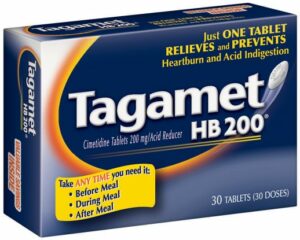Results for one of the most promising new treatments for hair loss in the FDA approval pipeline were released last week at the American Academy of Dermatology (AAD) meeting in San Francisco.
Roger S. Rittmaster, MD, produced Phase II (small scale human studies) study results for the new Glaxo-Welcome drug Dutasteride (GI198745), a dual 5-alpha reductase inhibitor. Hair loss is linked to the hormone dihydrotestosterone (DHT), a male hormone created when the enzyme 5-alpha reductase converts Testosterone into DHT. Propecia (finasteride), the latest approved medication for hair loss, inhibits one of the two types of this enzyme which turns Testosterone into DHT. Dutasteride, the medication discussed in this article, blocks both types of the enzyme and so it is believed it will be more effective at treating hair loss.
According to Rittmaster, men born with the type I 5-alpha reductase enzyme but without the type II 5-alpha reductase enzyme (the kind DHT blocks) experience hair loss when given Testosterone injections. He believes this shows that the type I enzyme does play a role in hair loss.
The early studies presented in San Francisco measure Dutasteride’s ability to block DHT in comparison to Finasteride and a placebo. The Phase II studies involved 416 men aged 21-45 with Norwood patterns IIIv, IV, and V. The study lasted for 6 months and was randomized and double-blind (meaning the investigators did not know who was getting which medication). Placebo and Proscar were compared to 0.05, 0.1, 0.5, and 2.5mg of Dutasteride. Proscar (the 5mg form of Finasteride – Propecia is the 1mg form) was used because Propecia was not available at the time the studies started.
The first figures presented were the IC50 values for Propecia vs. Dutasteride. The IC50 value is the concentration of the drug needed to cause a 50% inhibition. The numbers below may not tell you much if you don’t have a scientific background, but what it shows is that very little Dutasteride is required to inhibit type 1 5-alpha reductase but very large quantities of Propecia are required to do so. For type 2 5-alpha reductase (the type Propecia is intended to block), even less Dutasteride is required to block it than Propecia. So small doses of Dutasteride provide very good inhibition of both types of the 5-alpha reductase enzyme.
| 5-Alpha Reductase Enzyme Type | Treatment Evaluated |
IC50 (nM) |
| Type 1 | Dutasteride |
0.7 |
| Proscar |
81 |
|
| Type 2 | Dutasteride |
0.05 |
| Proscar |
0.16 |
|
| IC50 Values for Propecia vs. Dutasteride | ||
Both Serum (level circulating in the blood) Testosterone and Dihydrotestosterone were measured to evaluate Dutasteride’s performance in comparison to Finasteride and placebo. The results showed that the placebo showed no inhibition, Finasteride was similar to the 0.1mg dose of Dutasteride for serum DHT inhibition (about 70%), and the higher doses of Dutasteride provided the greatest serum DHT inhibition (90% for 0.5mg and 96% for 2.5mg).
Testosterone increased 4.4% for Finasteride, 6.4% for 0.05mg Dutasteride, 16% for 0.1mg Dutasteride, and 27% for 0.5mg and 2.5mg Dutasteride. Although the rise in Testosterone may seem high, the Testosterone levels were almost always within normal range according to Rittmaster.
Scalp DHT measurements were also assessed for both DHT and Testosterone. Scalp DHT was decreased 27% for 0.05mg Dutasteride, similarly for Finasteride (38%) and Dutasteride 0.1mg (37%), 54% for 0.5mg, and 82% for 2.5mg Dutasteride. Rittmaster concluded that these results show that most of the DHT in the scalp comes from type 1 5-alpha reductase.
Scalp Testosterone rose 24% for Finasteride, 46% for 0.05mg Dutasteride, 44% for 0.1mg Dutasteride, 104% for 0.5mg Dutasteride, and 154% for 2.5mg Dutasteride.
Those results were the primary results detailed in this presentation. No results regarding efficacy or side effects were presented, other than a statement by Rittmaster that sexual side effects have occurred in the studies.
Dutasteride at this point remains on hold for Phase III studies. It is unknown why the company has not decided yet whether to proceed with Phase III trials. The two most likely reasons may be that either the company believes the drug will not make enough money if released (Propecia sales have been described as disappointing in several press articles evaluating sales) or that the company does not believe the treatment will be approved for the cosmetic purpose of hair loss due to side effects. Glaxo-Wellcome made a statement that a decision would be made in February regarding the trials, however to date no decision has been publicly announced.
The good news is that Phase III trials have already been completed for Benign Prostatic Hyperplasia (BPH, also known as enlarged prostates) and the drug is scheduled to be submitted to the FDA for approval sometime this year and approved and marketed sometime next year. Finasteride followed a similar course and was first approved for BPH and then later for hair loss. Readers of this site and other online sources will know when the drug is available for BPH and should be able to obtain it this way. The bad news is that the masses will most likely not know as only sources such as this web site provide this information.
Regrowth.com has an official contact at Glaxo-Wellcome and has been keeping in touch with them regarding the status of Phase III trials for Dutasteride for hair loss. We will be contacting them this week to obtain an update.





